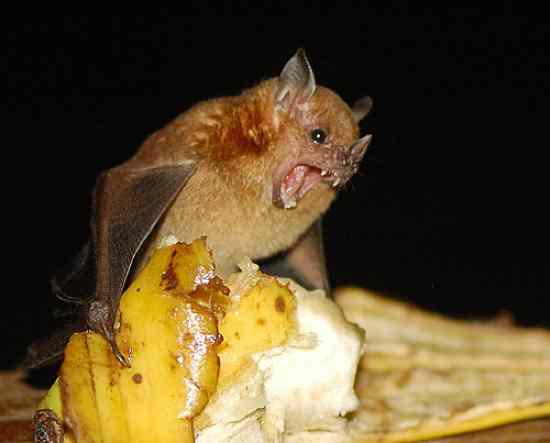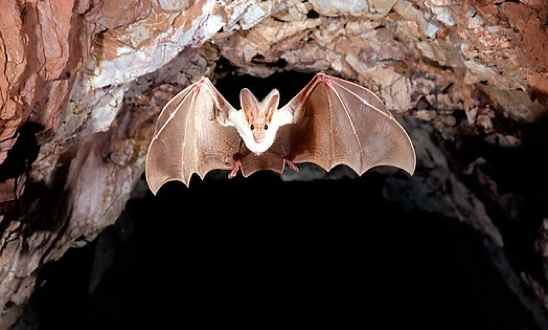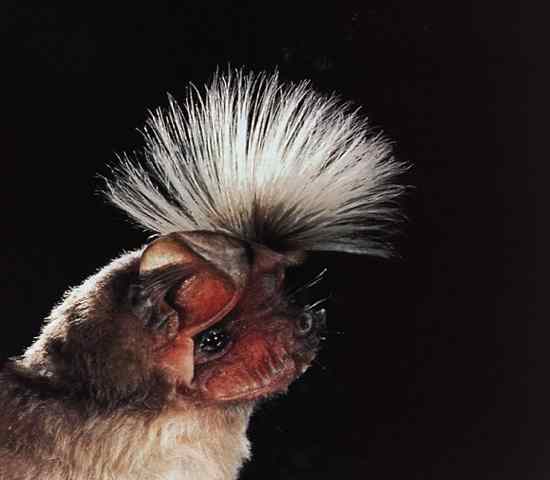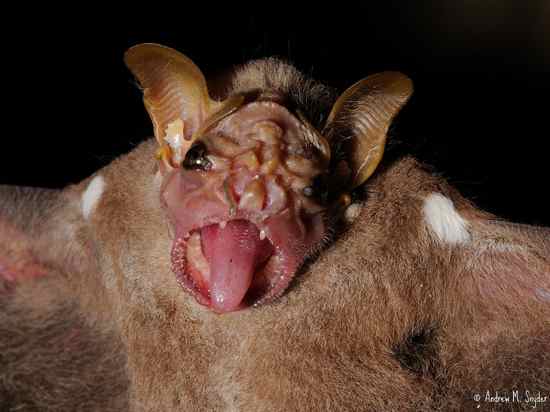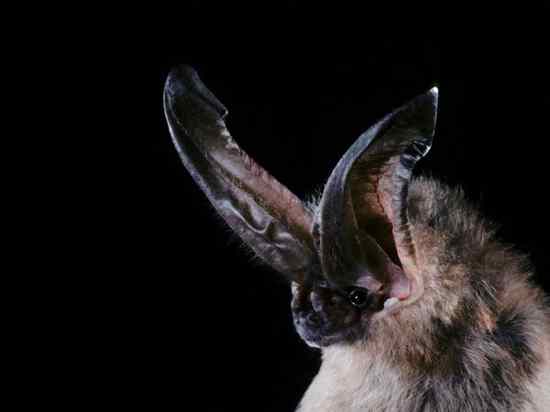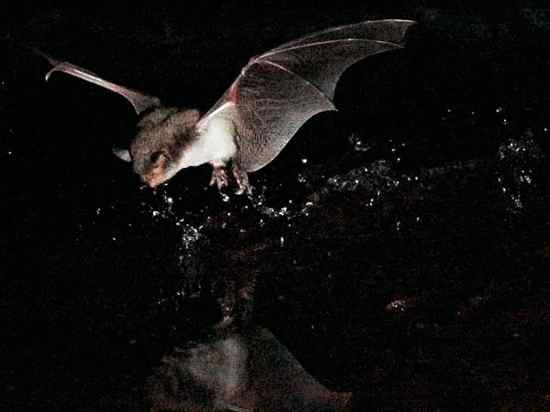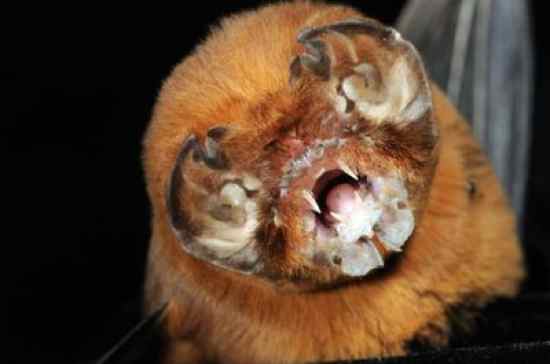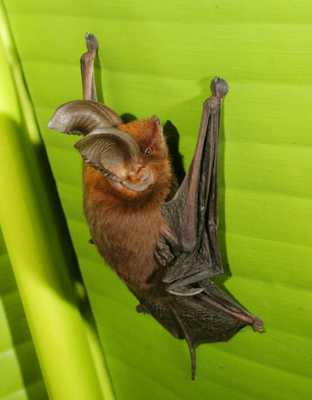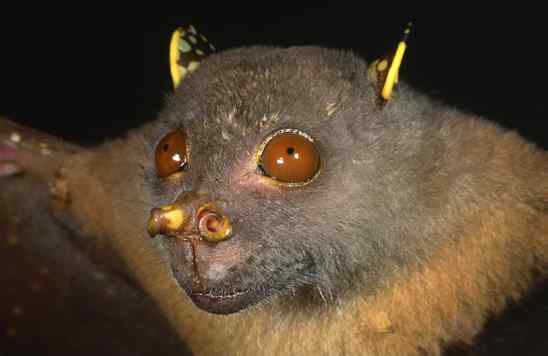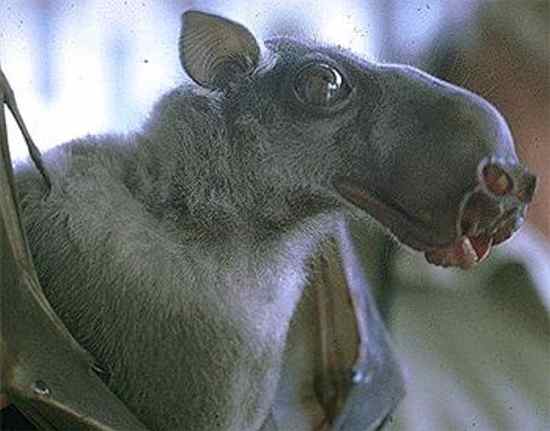A species exclusive to western Mexico, the banana bat is noted for its very long snout, the longest of any bat (relative to size). It is nectarivorous, which means it feeds mostly on nectar and is an important pollinator in its tropical deciduous forest habitat. It gets its name because it is often found in banana plantations.
This white furred bat is found in tropical rain forests from Mexico to Brazil, and also in the island of Trinidad, in the Caribbean. It is a solitary animal that spends daylight roosting under a palm leaf, and then flies high at night, hunting moths and other flying insects.
This bat is noted for its weird “hairdo”, and for the strange odor males use to attract females during courtship. They are insectivores and live in the rain forests of central Africa.
This fruit eating species is found in Mexico and Central America, where it is known as “murcielago viejito” (“old man bat”) or murcielago zopilote (“vulture bat”), due to its naked, wrinkly face. They have a large flap of skin that they use as a mask to cover their face when they sleep.
These bats feed on flying insects and, just as many other bats, use echolocation to find them. Their enormous ears gives them even better hearing than that of smaller eared bats. They belong to diverse genera and are found in many parts of the world.
This large bat lives in Mexico, Central and South America and feeds mostly on fish. It uses its long clawed feet to grab the fish in the water surface and then feeds on the wing. It has a smaller relative, the Lesser Fishing Bat, that feeds on aquatic insects.
Ghost faced bats are widely spread in the New World, from the southern US to Peru. They practically lack noses, have strange hard skin flaps on their faces and a very prominent forehead which gives them a very weird appearance. They feed on nocturnal insects.
This bat, endemic to Madagascar, was thought to use suction cups on its wings and ankles to attach to palm leaves and other smooth surfaces. Today it is known that they don´t use suction, but rather adhesion, by producing a sticky substance that acts as a glue- the same kind of adhesion found in tree frogs and salamanders.
Found in the Philippines, the tube nosed bat is a critically endangered species found in rain forests. Discovered in 1984, this species is noted for its strangely tubular nostrils and the stripes on its back (very few bats have stripes). They feed mostly on figs and other fruit but may eat insects on occasion.
Found in the rain forests of Africa, this large bat gets its name for the huge, strangely shaped head of the males. Most of the male’s thorax is actually a resonating chamber that allows them to produce very loud calls to attract females. They feed on fruit and, occasionally, on other animals.
